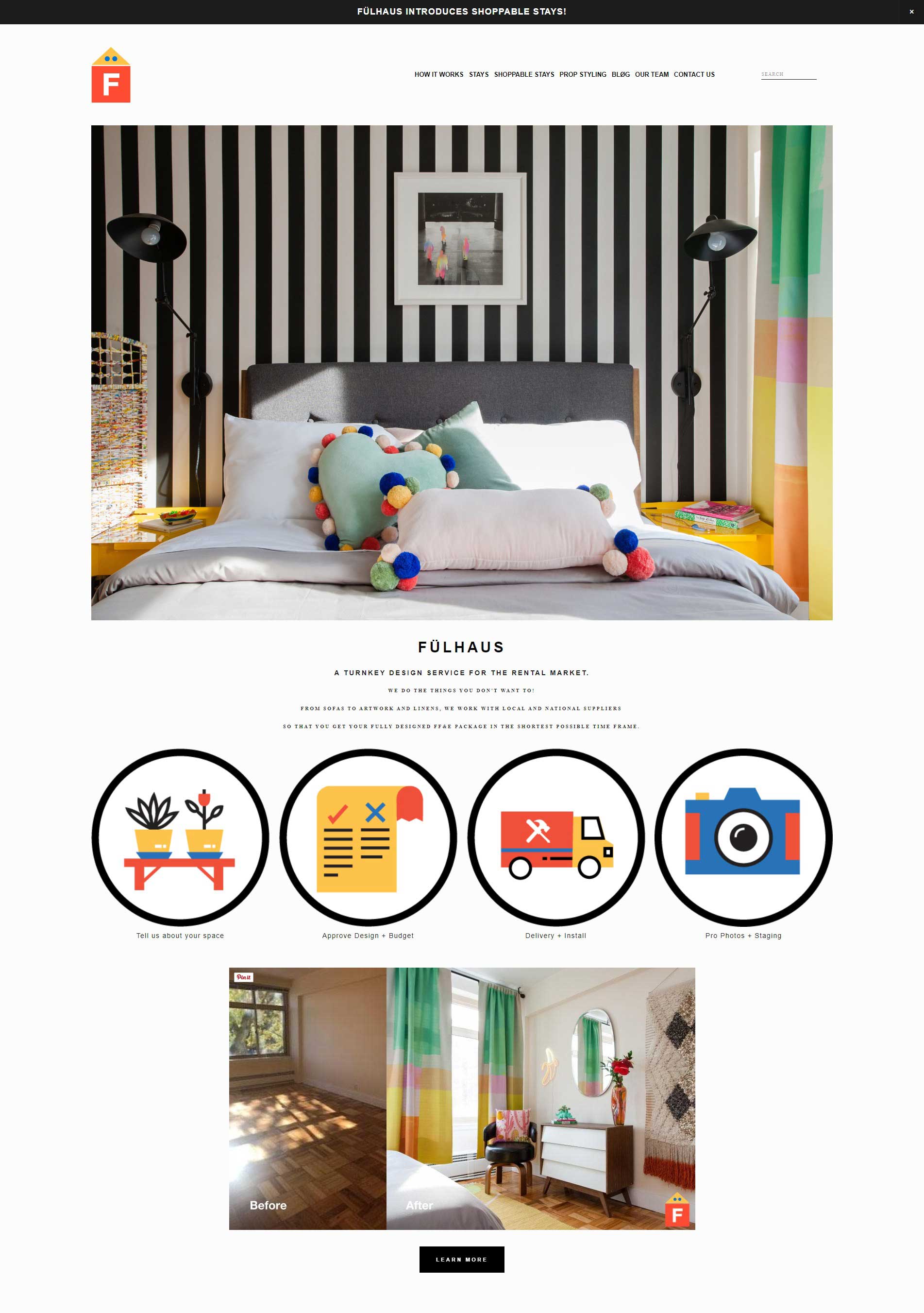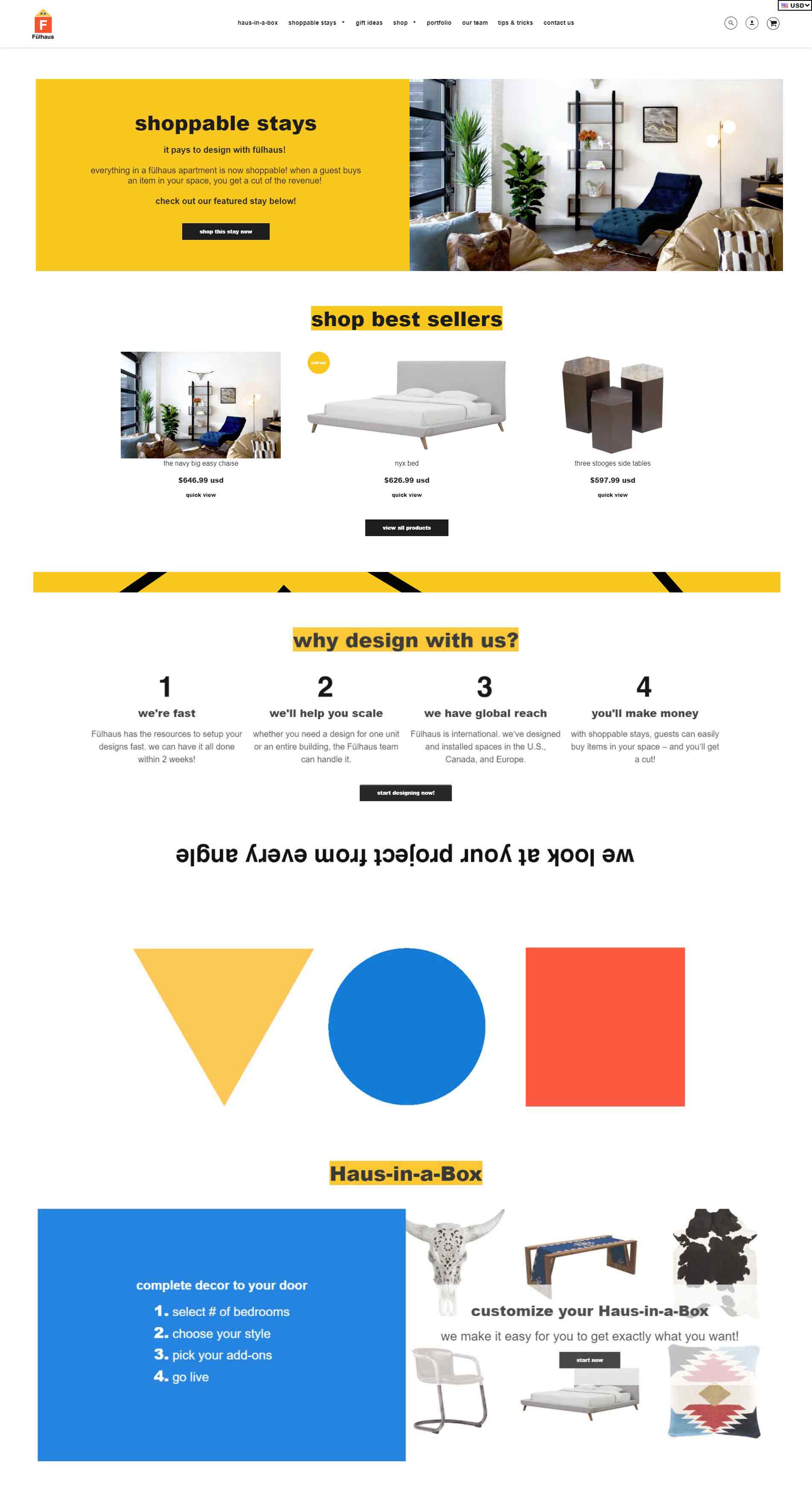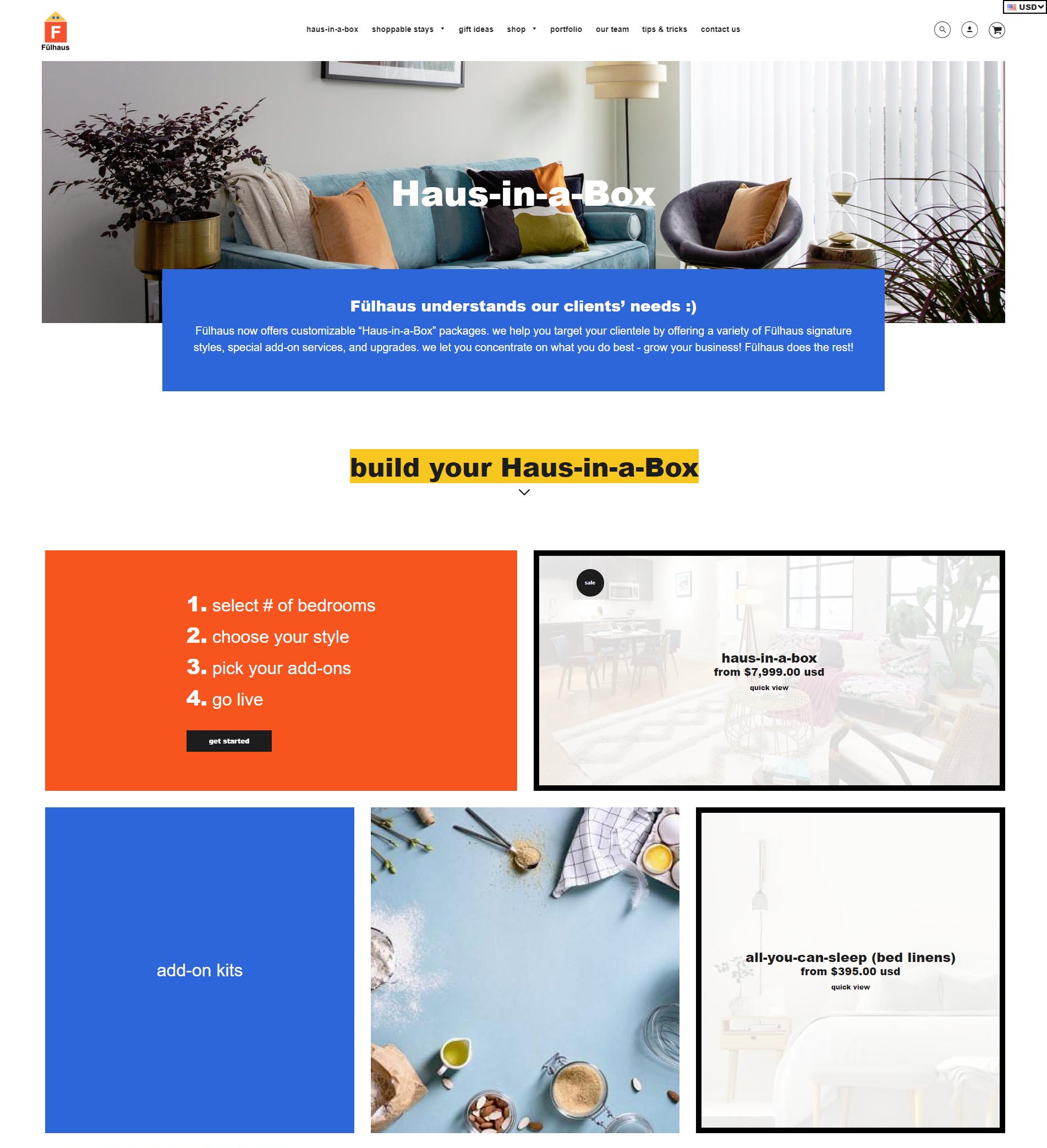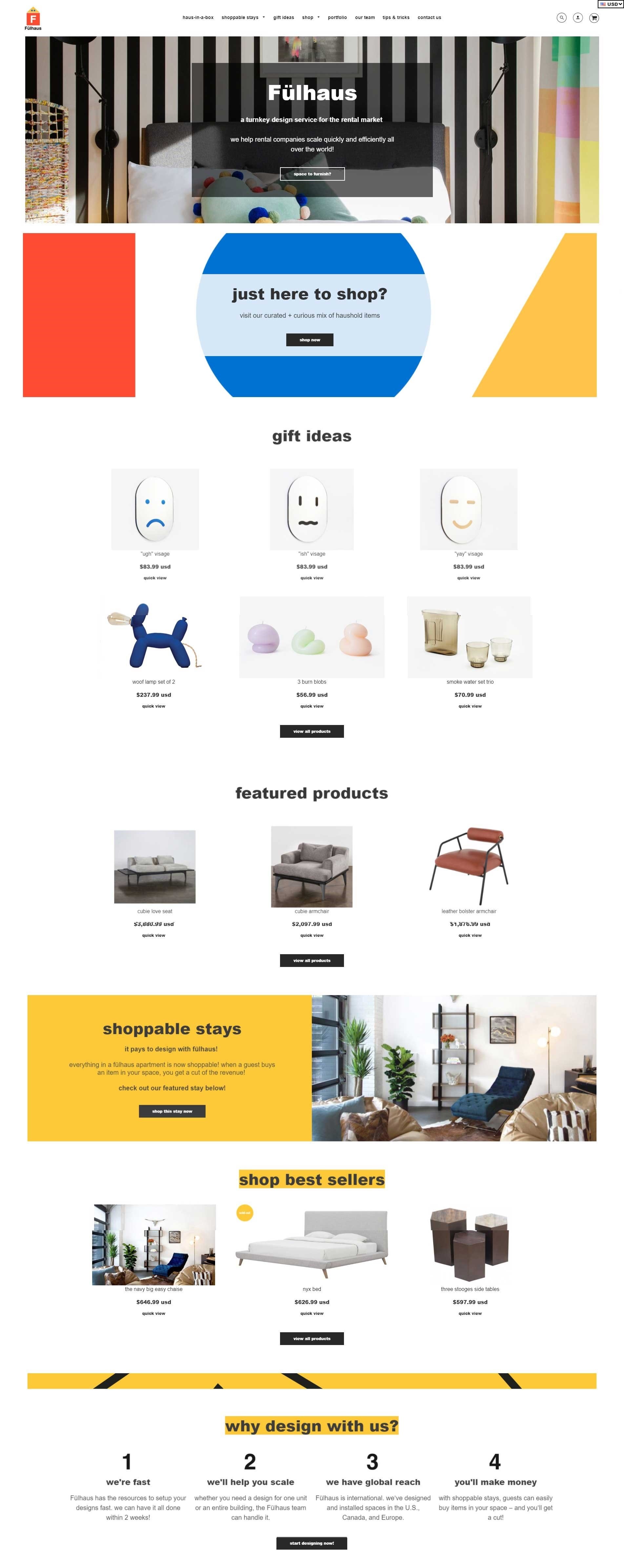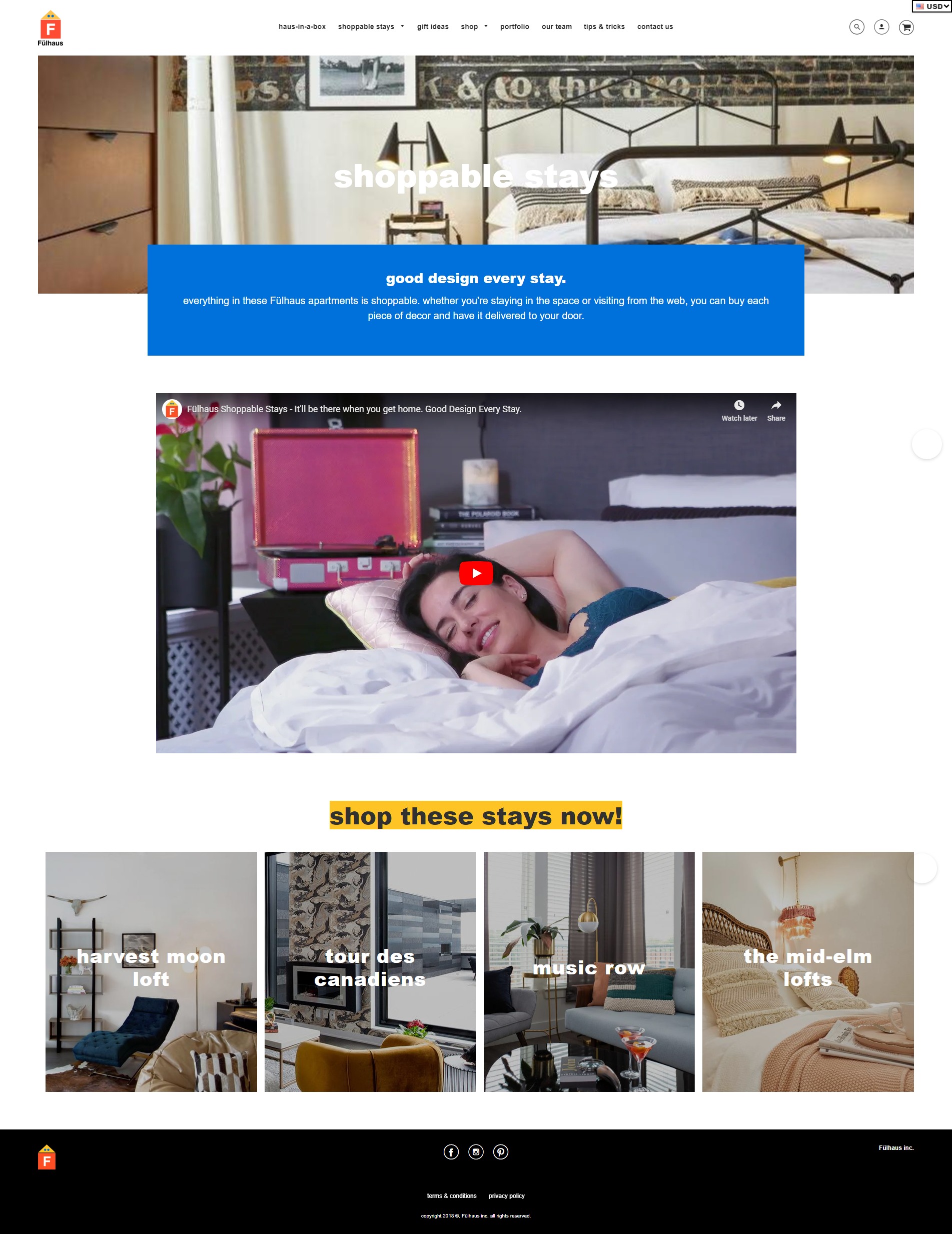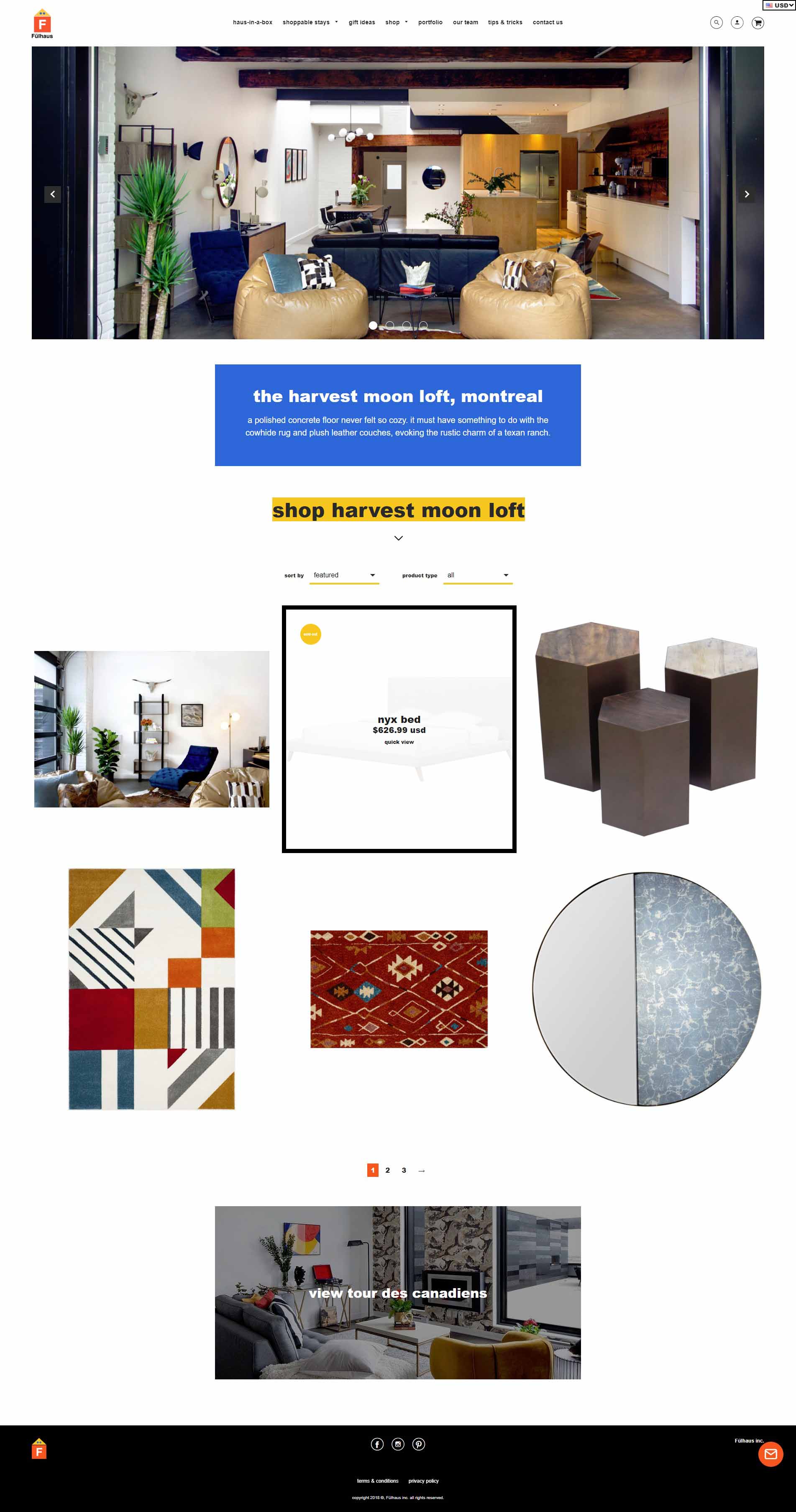Project Scope
Web Design (Shopify)
Client
Fülhaus Inc.
Website
fulhaus.com
Constant UX team
John as Project Lead
Janet as Lead Web Designer
The Project
Fülhaus is a Canadian company specializing in interior design for the short-term rental market. Their main clients are apartment/condo owners who operate multiple AirBnB spaces around the world.
Building on their interior design services, Fülhaus entered the e-commerce field through their Shoppable Stays feature. This system allows guests staying in AirBnBs to buy the décor items they see around them directly from the Fülhaus website.
The goal of this project was to build a website that served Fülhaus’ new e-commerce model, including Shoppable Stays and a general online store, while communicating their status as trusted interior designers. As the Project Lead, John worked with Sydney and her team at Fülhaus to develop a plan and keep the project on track.
The Challenge
Built on Squarespace, the existing Fülhaus website’s focus was on interior design services, mainly targeting AirBnB operators. With the addition of an e-commerce business model, an entirely new website had to be built on a different platform – in this case, Shopify.
Mixed Audience
From the start of the project, a recurring issue was the need to satisfy two different audiences: AirBnB operators on one hand (service-based B2B), and guests or consumers on the other (product based B2C). We needed to present value to operators in the from of interior design services, while also serving visitors who are simply looking to buy products.
Platform Limitations
Shopify offers a relatively quick and easy path to starting an e-commerce website, but at the cost of significant limitations in control, customization and flexibility. Using Shopify to target a hybrid audience through a mix of service-based information and specialized e-commerce functionality was a serious challenge. In some cases, third-party apps were required as custom solutions, which presented their own issues.
The Process
Our process started with two main questions: what does the website need to accomplish, and who is the audience?
Determining the purpose of the website presented a challenge because of the need to serve two distinct audiences, namely AirBnB operators and general e-consumers.
The website needed to achieve these goals:
- Present Fülhaus as experienced, trustworthy interior designers and offer specialized packages and pricing for AirBnB operators.
- Offer user-friendly, attractive e-commerce functionality for Shoppable Stays and general product categories.

Choosing The Platform
Based on their need for e-commerce functionality, we advised the Fülhaus team on two paths they could take when building a website.
- The first would be to build a site from scratch using a framework such as Magento. This would allow for maximum control, customization and flexibility but at a higher overhead and maintenance cost.
- The second would be to use Shopify, which is more like a website-as-a-service platform. This option offers speed, support and affordability in exchange for imposing limitations on functionality and a significant reliance on third party apps.
After considering their needs and resources, the Fülhaus team decided that Shopify was the way to go.

The Aesthetic
The new site’s visual aesthetic was guided by Fülhaus’ detailed style and branding guide. The old website was frequently referenced as an aesthetic starting point with new ideas developed throughout the process.
Important style guidelines included the use of branded colours, large fonts, and geometric graphic designs. The overall aesthetic spirit for this project was heavily focused on Fülhaus’ branding needs, with significant input from Janet, the lead web designer.
With regular consultation from Sydney and the Fülhaus team, we selected the Loft Shopify theme and worked around its limitations to develop an overall look and feel that satisfied all stakeholders.
Overcoming Challenges
Choosing Between Two Audiences
In order to solve the issue of satisfying two audiences, it was important to determine which one had priority and identify any areas where they would overlap.
Determining priority, although important in streamlining the focus of the site, was a difficult task that often shifted between audiences.
Rather than have two user paths presented side by side, we arranged the home page sections to flow from top to bottom in order of importance, highlighting the Shoppable Stays – a key feature where the two audiences overlap.
The Haus-in-a-Box Challenge
Haus-in-a-Box is a customizable design package that AirBnB operators can buy directly off the Fülhaus website. It’s a relatively complex and unique feature that involves both informing users about how it works and allowing them to select a variety of options, services and add-ons before checking out.
Shopify works best for collections of individual products with a few variants. Displaying something that includes a variety of products, services and add-on packages such as Haus-in-a-Box stretches the limits of the platform.
In order to properly present the Haus-in-a-Box feature, several iterations were developed, each corresponding to different potential user journeys. In the end, we created Haus-in-a-Box as one main product with variants reflecting the number of bedrooms, styles and white-glove services.
Users can access the Haus-in-a-box product page directly from a home page section, or learn more about the feature by visiting an intermediary page via the nav menu. All choices, including add-on packages, are made on the product page itself.
Part of the new homepage
New Shoppable stays main page
New Shoppable stays collections page
New mobile homepage
The End Result
Since all work was done on the Fülhaus Shopify account, there was no site migration involved pre-launch (only a domain re-direct). Once the design and content were finalized, Janet set to work on the mobile version to ensure responsiveness and usability before launch.
The site was launched without issue, and monitored for a few weeks for stability and functionality. Some minor problems arose with third party applications such as the currency converter, but these were handled by John communicating with the developers.
The decisions we made regarding the website layout and e-commerce functionality were validated when the first major Shoppable Stays sale came through within a few days of launch.
In the end, steady communication, clear questioning and a consistent focus on testing and adaptation was the key to arriving at a solution for this unique business model.
Reach out.
Need help engaging your website’s visitors? Get in touch with us.

